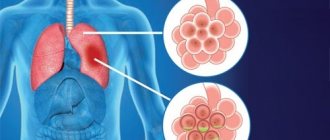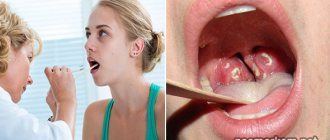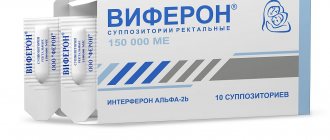Accumulation of mucus in the throat is an unpleasant but treatable condition. The main thing is to accurately determine the cause of this symptom and eliminate it. That is, a condition in which mucus collects in the throat is not an independent diagnosis, but one of the manifestations of the underlying disease. Phlegm in the throat can accumulate not only due to inflammatory processes in the nasopharynx. There are other reasons not related to ENT organs. Which? Read our new article.
The accumulation of mucus in the throat is a very unpleasant condition, especially in cases where it accumulates constantly, and the person cannot leave the feeling that there is something in the throat.
In medicine, there is even a special term that is used when mucus constantly flows into the throat from the nasal cavity - postnasal drip. Essentially, it's the same runny nose, but in reverse.
When mucous discharge from the nose does not come out, but inward, it irritates the walls of the pharynx and causes a person to have an irresistible desire to frequently cough up and swallow phlegm. This state, of course, cannot be called pleasant. To get rid of it, you first need to determine why mucus accumulates in the throat, which system of the body has failed, and carry out proper treatment of the disease. Unfortunately, you won’t be able to do this yourself. We need the help of a qualified otolaryngologist.
So why does mucus accumulate in the throat? The causes and treatment of this condition are the topic of our new article.
Is it possible to swallow phlegm in the throat?
The accumulation of mucus in the throat forces the patient to pay attention to it.
There are only two options: expectoration or swallowing. Both processes are physiological. Swallowing is harmless: sputum passes into the stomach and is broken down into components. Enzymes in the gastric juice transform mucus into water, which returns to the body and brings only benefits. Harmful components are digested and excreted naturally.
The feeling of mucus in the throat due to hypersecretion of the glands of the respiratory system is normal. These nerve endings signal stagnation of phlegm. The main thing is the absence of suffocation, which is a dangerous sign of the development of events: swelling of the larynx with a threat to life.
Sputum in the lungs by composition
General information
Salivary fluid is approximately 95% water, while the remainder of the composition is a complex that includes enzymes, protein, acidic salt residues and other trace elements. An important function here is performed by the enzymes amylase and maltose, which help break down food particles after they enter the digestive system. The enzyme lysozyme helps maintain the natural balance of microflora, but mucin, which, by the way, is responsible for the foamy consistency of saliva, completely covers the food bolus and promotes its unhindered digestion1.
Why does mucus appear on the tongue?
As a result, food passes through the esophagus without problems and enters the stomach, where the main process of digesting food and breaking it down into small particles occurs. Obviously, the degree of thickness of the salivary fluid determines how correctly the digestion process proceeds.
Coughing up white mucus without coughing
Enveloping the larynx with white mucus without a reflexive attempt to remove it is a common reason for patients to see a doctor. Most often, this is pure physiology, not dangerous to health: unfavorable ecology, food irritating the mucous membranes, alcoholic drinks.
If, in addition to sputum, cold symptoms appear: runny nose, headache and fever, this is a reason to consult a doctor.
Most likely, acute respiratory infections provoked an exacerbation of a latent process, which is localized in the upper respiratory tract and does not manifest itself in anything other than hypersecretion of mucus. The pathology does not descend into the bronchi, so there is no cough. But such “innocence” may hide tumors of the nasopharynx, so consultation with a specialist is necessary.
For prevention purposes, any expectoration of white mucus without coughing for a couple of days is a reason to visit a therapist.
An examination with special equipment and a series of tests will allow you to determine the true cause of hypersecretion and prescribe therapy or send you to a specialized specialist.
Pharyngitis
Pharyngitis is an infectious disease that is accompanied by severe damage to the oral mucosa and lymph nodes. Rarely occurs alone - most often pharyngitis is accompanied by acute inflammatory processes. A patient suffering from pharyngitis is faced not only with a dry throat, but also with an unpleasant soreness and tickling, a sensation of a foreign element in the nasopharynx, as well as a general feeling of fatigue and malaise. Most often, to eliminate the unpleasant consequences of pharyngitis, they resort to complex treatment - simultaneously with the use of medications, the patient is prescribed mineral therapy to normalize the condition of the mucous membrane in the pharynx, which is supplemented by herbal medicine (the use of medicinal herbs and infusions to irrigate the affected area of the pharynx).
Other reasons
If sputum accumulates in the throat due to allergies, then you should take antihistamines (Suprastin, Cetirizine, Loratadine, Tavegil). Relief should occur within the first day of using them. If the symptom is caused by reflux and reflux of stomach contents, then treatment is prescribed by a gastroenterologist.
It will be individual for each patient (with the use of enzymes, anti-inflammatory drugs and dopamine receptor blockers).
You will also be interested in:
- How to treat a dry cough in an adult that lasts for a long time without fever
How to remove mucus using folk remedies
Along with the main treatment prescribed by the doctor, you can use folk remedies prepared on the basis of natural ingredients:
- from sea salt, baking soda or chamomile infusion: prepared solutions, infusions and decoctions of such ingredients are used for gargling, which helps remove pathogenic microorganisms from the mucous membranes;
- from black radish and honey: grate the fruit, mix with honey, take 1 tsp. three times a day, which helps relieve cough and quickly remove mucus from the mucous membranes;
- from aloe and honey: a mixture of plant juice and beekeeping product helps relieve the symptoms of an allergic reaction, helps remove exudate from the throat when consumed 1 tsp. twice a day;
- from calendula: grind the grass, mix 1 tsp. with honey in the same volume, take half a spoon orally before going to bed and after waking up;
- from potatoes: the tubers are boiled without waiting for the water to cool, and steam inhalation is carried out.
When you have a cold, warming your throat with warm compresses is helpful. This treatment helps prevent the infection from spreading and thus speeds up recovery. In some cases, it is enough to use the famous Zvezdochka balm, which is used to lubricate the neck, wrapping it with a warm scarf on top.
Folk remedies can cause adverse reactions, so you should consult your doctor before using them.
Causes caused by pathological processes
Green sputum without cough is always the cause of an infectious disease. It can form or accumulate in the throat with the following pathologies:
- pharyngitis (inflammation of the larynx);
- rhinitis (inflammation of the nasal mucosa);
- nasopharyngitis (inflammation of the nasopharynx);
- bronchial or pulmonary diseases (usually chronic);
- tonsillitis (inflammation of the tonsils);
- allergy.
Most often, the feeling of phlegm in the throat occurs in people who suffer from laryngopharyngeal reflux or esophagitis.
Mucus drains from the nose down the back of the throat. Or it is thrown from the lower respiratory tract, esophagus. Irritation that occurs inside the pharynx increases the formation of sputum.
Viral and bacterial diseases that cause excess mucus in the throat are often accompanied by elevated body temperature. When fluid comes back from the esophagus, there is an unpleasant taste in the mouth.
Video
This video talks about the reasons for the appearance of mucus in the nasopharynx.
If you have already discovered an addiction, then you need to contact a pediatric ENT doctor about this problem. There can be many reasons for the formation of mucus in the nasopharynx in both adults and children. It is very important to recognize and eliminate them in time. Look after your health and carry out preventive measures during the period, then you will not be afraid of any permanent diseases, let alone complications. What is chronic bronchitis code according to ICD-10 can be read at the following link.
Possible causes of sputum without cough and additional symptoms
Sputum is mucus that is secreted by glandular cells of the trachea, nasal cavity, paranasal sinuses and bronchi. Normally, no more than 100 ml of mucus accumulates in the tracheobronchial tree per day. It has bactericidal properties and is involved in the removal from the respiratory tract:
- dust;
- allergens;
- pathogenic agents.
When the mucous membrane is irritated, the activity of glandular cells increases 10 times or more.
Therefore, in case of illness, up to 4 liters of pathological sputum are produced per day. Expectoration of mucus without coughing is a nonspecific symptom that accompanies pathologies of various systems:
- respiratory;
- digestive;
- endocrine;
- nervous.
To find out the cause of the condition, you need to determine:
- the nature of sputum - elasticity, transparency, color, smell;
- associated symptoms – chest pain, sore throat, burning sensation in the nose;
- factors that provoke exacerbation are strong odors, physical activity, drinking hot drinks, etc.
Expectoration of mucus without coughing in half of the cases indicates damage to the nasopharynx or bronchopulmonary system.
Sinusitis and rhinitis
Thick mucus is released without coughing in case of inflammation of the nasopharynx and paranasal sinuses. Copious sputum is expectorated in the following diseases:
- The best cough syrup for children from all types
- Rhinitis (runny nose). Inflammation of the nasal mucosa is accompanied by the secretion of viscous mucus. Its transparency and elasticity depend on the form of the disease. An infectious runny nose produces yellow or green mucus. In people with insufficient tone of blood vessels, vasomotor rhinitis occurs, in which a transparent secretion is formed. With atrophic rhinitis, foul-smelling green sputum occurs.
- Sinusitis. When the maxillary sinuses become inflamed, sinusitis occurs, the ethmoid sinuses - ethmoiditis, the sphenoid sinuses - sphenoiditis, and the frontal sinuses - frontal sinusitis. If you cough up white, thick mucus without coughing, the cause of the illness is a viral infection or allergy. With bacterial and fungal inflammation, it acquires a yellow or green tint and an unpleasant odor.
Expectoration of mucus without coughing occurs mainly in the morning, as during the night it flows down the back wall of the throat into the hypopharynx.
Pharyngitis, laryngitis, tonsillitis
Phlegm in the throat without cough in children and adults occurs due to inflammation:
- palatine tonsils – tonsillitis;
- pharynx – pharyngitis;
- larynx - laryngitis.
If the secretion is transparent, this indicates the onset of the disease or the attenuation of inflammation. In the absence of complications, the cough does not bother you, and small amounts of sputum are expectorated. If it becomes thick and green, purulent inflammation is possible.
The release of viscous mucus without coughing after laryngitis is a sign that the inflammation has become chronic.
Reflux esophagitis
If there is no cough, but there is sputum in an adult, the cause may be the reflux of gastric contents into the esophagus - gastroesophageal reflux disease (GERD). Gastric juice contains hydrochloric acid, which irritates the mucous membrane and provokes the production of mucus.
GERD manifests itself:
- heartburn;
- sour taste in the mouth;
- swallowing disorder;
- hoarseness of voice;
- heaviness in the stomach after eating.
GERD is characterized by insufficiency of the esophageal sphincter.
The contents of the stomach enter the esophagus when the body is tilted or in a supine position. Therefore, clear mucus is coughed up after waking up. If you accidentally inhale gastric juice, a spasmodic cough occurs, accompanied by a burning sensation in the laryngopharynx.
Tuberculosis and other lung infections
Viscous mucus accumulates in the respiratory tract during infectious inflammation of the bronchi and lungs. Green sputum occurs when the ENT organs are damaged:
- Koch's bacillus;
- adenovirus;
- Staphylococcus aureus;
- pneumococcus;
- coronavirus;
- measles virus;
- peptostreptococcus;
- pyogenic streptococcus;
- corynebacterium.
Pathogenic microorganisms produce toxins, so signs of intoxication (poisoning) come to the fore:
- weakness;
- lack of appetite;
- headache;
- drowsiness;
- sweating
With viral inflammation, the sputum is clear, with bacterial inflammation it is yellow, and with purulent inflammation it is green.
If there is no cough and mucus accumulates in the bronchi, breathing becomes harsh. When listening with a stethoscope, moist rales are heard in the lungs.
Allergy
Sputum production without coughing is one of the signs of a respiratory allergy. Irritants (allergens) are:
- medicines;
- plant pollen;
- Food;
- fumes from household chemicals;
- dust mites.
Manifestations of respiratory allergies:
- Night cough in children and adults - causes of dry and wet cough, diagnosis and treatment methods
- labored breathing;
- redness of the throat mucosa;
- nasal congestion;
- lacrimation (with hay fever);
- pain when swallowing;
- hoarseness of voice.
Depending on the location of the inflammation, the allergy occurs with or without a cough.
Patients complain of expectoration of clear, viscous sputum, which sometimes becomes glassy. In the absence of treatment, the clinical picture is supplemented by new symptoms - spasmodic cough, shortness of breath, swelling of the mucous membranes.
Bronchitis
With inflammation of the bronchi, the production of bronchial secretions increases 5-7 times. At the initial stage, the cough appears and then disappears. When accumulated mucus irritates the receptors, coughing attacks occur. Without taking mucolytics, she does not expectorate, so wheezing appears in the lungs.
Symptoms of bronchitis:
- malaise;
- hard breathing;
- chest discomfort;
- nasal congestion;
- moderate increase in temperature.
After 2-3 days, the mucus begins to come out abundantly, so a productive cough occurs. It intensifies at night or in the morning, with a sharp change in temperature.
Sjögren's syndrome
Sputum without fever and cough is one of the signs of Sjögren's disease. It is characterized by damage to connective tissue and exocrine glands. Accompanied by sinusitis and tracheobronchitis, separation of rusty sputum.
Symptoms of Sjögren's disease:
- muscle and joint pain;
- dry eyes;
- seizures in the corners of the mouth;
- violation of the act of swallowing;
- prostration;
- dry tongue;
- formation of crusts in the nose;
- enlargement of the parotid glands.
The mucous membrane of the throat dries out and acquires a bright red tint.
If the glands are insufficient, the saliva becomes viscous. Due to dysphagia (impaired swallowing), the patient cannot swallow it. Therefore, there is a feeling of mucus accumulation in the throat.
Inflammation of the adenoids
Sputum without cough in a child appears against the background of adenoiditis. This is the name for inflammation of an enlarged nasopharyngeal tonsil. The adenoids block the nasal passages, so viscous secretions accumulate in the nasal cavity. During sleep, it flows into the throat through the back wall of the pharynx.
Manifestations of adenoiditis:
- night snoring;
- violation of nasal breathing;
- coughing up yellow mucus;
- restless sleep;
- headache;
- elevated temperature.
There is no cough while awake. It occurs in the morning or immediately after waking up due to irritation of the throat by nasal secretions. If left untreated, the Eustachian tube becomes inflamed (eustachitis), so the child complains of decreased hearing acuity and ear pain.
Esophageal diverticulum
An esophageal diverticulum is a saccular bulge in the wall of the esophagus. It manifests itself as dysphagia, bad breath, and a feeling of a lump in the throat. Many people experience hypersalivation - excessive production of saliva, so they complain of copious sputum discharge without coughing attacks.
Associated symptoms depend on the location of the diverticulum. The most striking clinical picture when a protrusion forms in the clavicle area:
- change in voice timbre;
- nausea;
- scratching in the throat;
- expectoration of thin sputum;
- regurgitation of food;
- backflow of mucus from the esophagus into the throat.
Large diverticula put pressure on the respiratory system, causing coughing. It is combined with chest pain and dizziness.
Consequences of smoking
Non-infectious bronchitis is a problem faced by smokers with more than 7 years of experience. Systematic damage to the bronchi by tobacco smoke leads to irritation and inflammation of the mucous membrane, which increases the activity of glandular cells.
Symptoms of smoker's bronchitis:
- rawness in the throat;
- occasional cough;
- mucus department;
- dyspnea;
- hard breathing;
- tachycardia (against the background of coughing attacks).
During the day, sputum passes without coughing. But during sleep, it accumulates in the throat, so in the morning coughing attacks occur, during which clots of transparent mucus are released.
Worm infestation
If a child or adult does not cough up clear or white sputum, the cause may be helminthiasis. In the acute phase, parasite larvae circulate in the blood and enter the bronchi. They irritate the mucous membrane, causing a productive cough. A person complains about:
- chest pain;
- swelling of the mucous membranes;
- shortness of breath;
- nausea.
When the mucus is swallowed, the worms enter the intestines, where they develop into adults. In the later stages, helminthiasis manifests itself:
- abdominal pain;
- unstable stool;
- weakness;
- sleep disturbance;
- elevated temperature;
- convulsions.
With a chronic disease, immunity decreases, so rhinitis, tracheitis, and influenza often recur.
Other reasons
Foul-smelling mucus without coughing is a dangerous symptom that occurs against the background of purulent inflammation of the ENT organs. Without treatment, complications are possible - abscess and gangrene of the lung, sepsis (blood poisoning).
Possible causes of expectoration:
- lungs' cancer;
- pulmonary syphilis, disintegration of syphilitic gum;
- bronchopulmonary carcinoma;
- cystic fibrosis;
- pulmonary mycosis;
- actinomycosis;
- bullous disease;
- pleural empyema;
- COPD
Yellow sputum without cough is a sign of bacterial diseases of the nasopharynx. If clots of dried blood are found in it, this indicates mucopurulent inflammation. Brown sputum in the morning without cough occurs with bronchiectasis and cardiac pathologies.
Cleaning your tongue correctly
During daily brushing of teeth, many people forget to pay due attention to the tongue, but it needs equally thorough and regular cleansing of bacteria and food debris. For this purpose, you can use the rear ribbed surface of the head of a toothbrush, designed specifically for cleaning the tongue, as well as special scrapers, which can be bought today at a pharmacy or online. The technique for carrying out the procedure is as follows:
- After brushing your teeth, rinse the bristles and begin treating the surface of your tongue. Using sweeping movements, starting from the base, we gradually move towards the tip, removing accumulated plaque. This must be done carefully, without pressing too hard on the sensitive epithelium,
- first we clean one side of the organ, then move on to the second,
- We brush the brush across a few more times, if necessary, add a small amount of toothpaste, after which we re-process the entire surface of the tongue, but now from the tip to the base,
- Rinse your mouth thoroughly with water and spit out the remaining paste.
Regular brushing of your teeth and tongue will help avoid problems.
It is very important to monitor the health of your tongue and if any suspicious abnormalities appear in its condition, you should immediately contact a specialist. You should not ignore a symptom, even if it does not cause you much discomfort. After all, this can be a direct signal of health problems, and the sooner you find out the cause of the problem, the easier and faster you can get rid of it.
- Banchenko G.V., Maksimovsky Yu.M., Grinin V.M.: Language “mirror of the body”, 2000.
Inhalations for wet cough
A productive wet cough without fever can be treated with inhalations. These procedures, based on the inhalation of medicinal and biologically active substances, help reduce thickness and viscosity, more actively liquefy and remove sputum. To treat coughs, steam inhalers and nebulizers are used, to which special medications are added. Inhalations that help moisturize the mucous membrane help to quickly reduce pain, reduce the viscosity of sputum, eliminate spasms and relax the muscles of the bronchi. You can use Doctor MOM® Phyto ointment, which is locally irritating , distracting, anti-inflammatory and antiseptic effect.
Expectorants
An important point is the use of expectorants - they thin the mucus and help it separate from the walls of the mucous membrane. As a result, all the mucus comes out naturally with a cough. For the treatment of adults, you can use cough tablets, Ambroxol, Bromhexine, Libexin, Mucaltin, Lazolvan.
A faster and more effective drug is ACC, Acetsex. Cough and snot in a child’s throat are best treated with herbal expectorants - cough syrups Gedelix, Gelisal, Linkas. There is no need to drink an expectorant for a long time; 1-2 days are enough until the phlegm comes out.
Which doctor should I contact?
Dry throat is a fairly common symptom, so there is no clear answer to this question. It all depends on your individual clinical picture. However, if you are seriously concerned about a growing symptom and feel severe dryness in your throat, you should immediately visit an otolaryngologist, or ENT specialist - this is the specialist who deals with the treatment of the throat and will be able to advise you both on the treatment of dryness and on further medical specialist .
Dry throat is a dangerous symptom, without proper attention to which a person is recommended to face significant complications. At the first signs of dry throat, we recommend that you immediately consult your doctor to receive qualified medical care.
Call our contact center at 8 (495) 230 03 09 and we will help you make an appointment with a specialist!
Sinupret
The herbal preparation Sinupret will help treat snot in the nasopharynx.
The product was created specifically for the natural removal of thick secretions from the sinuses and upper respiratory tract. Sinupret has an immunomodulatory and antiviral effect, increases the body's resistance to bacterial infections, increases mucus secretion and the formation of liquid sputum, which facilitates expectoration. The drug is natural, does not cause addiction, does not cause side effects, is hypoallergenic, it has no contraindications, it can even be used to treat small children and people with immunodeficiency.
Sinupret is available in the form of drops, tablets, capsules, dragees and baby syrup.











